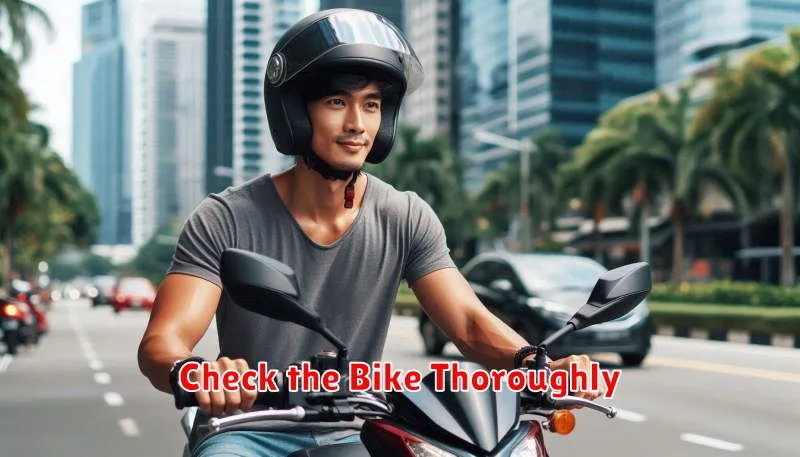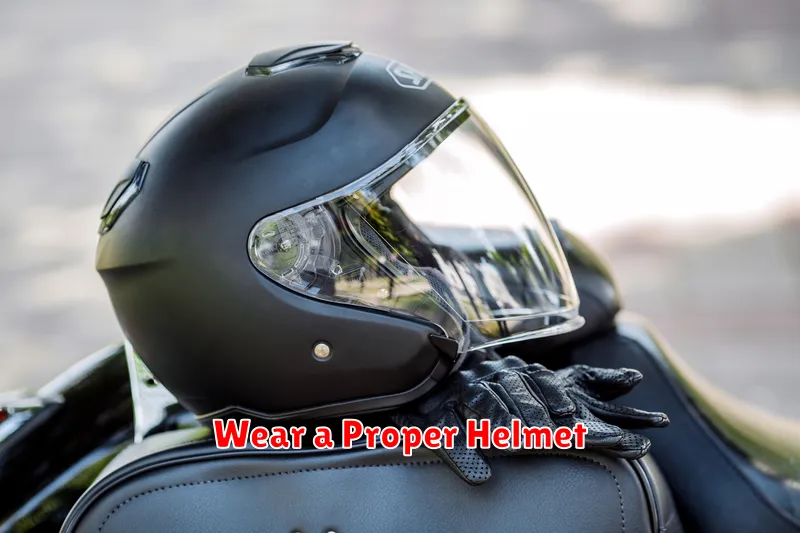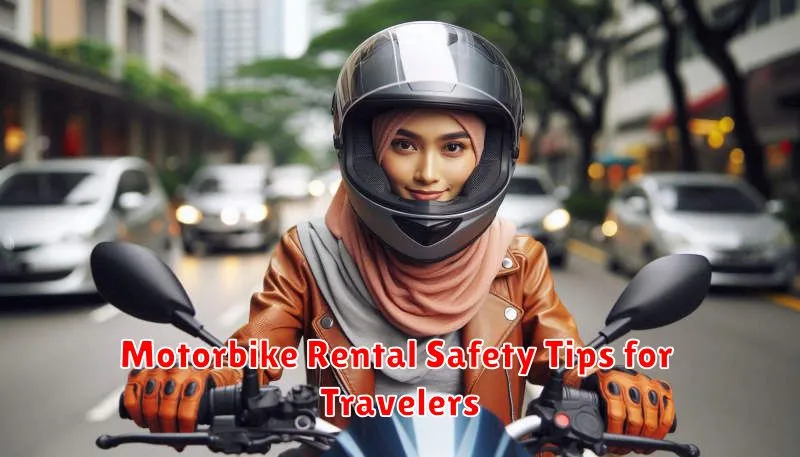Planning an exciting trip and considering renting a motorbike? Renting a motorbike offers an exhilarating way to explore new destinations, providing freedom and flexibility. However, motorbike rental safety should be a top priority for all travelers. Before you hit the open road, it’s crucial to familiarize yourself with essential safety precautions to ensure a smooth and secure journey. This article will provide valuable motorbike rental safety tips to help you navigate the roads safely and confidently while enjoying your travels.
From understanding local traffic laws and choosing the right safety gear to inspecting your rental motorbike and practicing defensive riding techniques, this guide covers the essential aspects of safe motorbike rental practices. Whether you’re a seasoned rider or new to motorbikes, these motorbike safety tips for travelers will equip you with the knowledge and skills necessary to mitigate risks and enhance your overall travel experience. Prioritizing motorbike safety will allow you to fully embrace the adventure while ensuring a responsible and enjoyable trip.
Check the Bike Thoroughly

Before you hit the road, a comprehensive inspection of the motorcycle is crucial for a safe and enjoyable trip. Don’t rush this step.
Tires: Check tire pressure and look for any signs of damage, such as cuts, bulges, or embedded objects. Ensure the tread depth is adequate for safe riding.
Brakes: Test both front and rear brakes. They should engage firmly and progressively. Check the brake fluid level, too.
Lights and Signals: Verify that the headlight, taillight, brake lights, and turn signals are all functioning correctly. This is essential for visibility and communication with other drivers.
Controls: Familiarize yourself with the location and operation of all controls, including the horn, kill switch, and turn signal indicator. Make sure the mirrors are adjusted properly for optimal visibility.
Fluids: Check engine oil and coolant levels. If necessary, top them off according to the manufacturer’s recommendations.
Wear a Proper Helmet

Wearing a helmet is the single most important safety measure you can take when renting a motorbike. A proper helmet significantly reduces the risk of head injuries, which can be life-threatening in the event of an accident.
Ensure the helmet you choose fits snugly and securely. It shouldn’t wobble or shift excessively on your head. Fasten the chin strap properly every time you ride.
Reject helmets with cracks, dents, or other visible damage. Look for a helmet that meets recognized safety standards such as DOT (US Department of Transportation) or ECE (Economic Commission for Europe). A full-face helmet provides the most comprehensive protection.
Know Local Driving Laws
Before you hit the road on your rented motorbike, thoroughly research and understand the local driving laws and regulations. Familiarize yourself with speed limits, right-of-way rules, and any specific regulations regarding motorbike operation. Ignoring these rules can lead to fines, accidents, or even legal trouble.
Pay close attention to laws regarding helmet use. In many locations, helmets are mandatory for both riders and passengers. Ensure you have a properly fitted and approved helmet.
Also, be aware of local licensing requirements. You may need an international driving permit or a specific motorbike endorsement on your existing license. Confirm the necessary documentation before your rental.
Test Brakes and Lights
Before embarking on your journey, it is crucial to ensure the motorbike’s brakes and lights are functioning correctly. This check can significantly impact your safety on the road.
Start by testing both the front and rear brakes. Apply each brake individually and assess their responsiveness. The brakes should engage firmly and bring the motorbike to a controlled stop. Any sponginess, unusual noises, or difficulty in stopping should be reported to the rental agency immediately.
Next, verify all lights are operational. This includes the headlight (high and low beam), taillight, brake light, and turn signals. Have someone assist you or position the motorbike near a reflective surface to confirm visibility. Report any malfunctioning lights to the rental agency.
A quick inspection of the brake fluid reservoir is also recommended. Ensure the fluid level is within the designated range. Low brake fluid can indicate a potential issue that requires professional attention.
Avoid Night Rides
Riding a motorbike at night significantly increases the risk of accidents. Reduced visibility makes it harder to spot hazards like potholes, debris, and animals. Additionally, judging distances and the speed of other vehicles becomes more challenging in the dark.
Fatigue is another crucial factor. After a long day of sightseeing, riding at night can exacerbate tiredness, impairing reaction time and decision-making abilities. This is especially important for travelers who may be experiencing jet lag or unfamiliar road conditions.
Furthermore, some areas may have inadequate street lighting, increasing the danger. If a night ride is unavoidable, ensure your motorbike has functioning headlights and taillights, wear reflective clothing, and reduce your speed significantly.
Keep Emergency Contacts
Before embarking on your journey, ensure you have a readily accessible list of emergency contacts. This should include local emergency services (police, fire, and ambulance), your rental agency’s contact information, and your country’s embassy or consulate if you are traveling internationally.
It’s also wise to inform a friend or family member back home of your itinerary, including your planned routes and estimated return times. This way, someone is aware of your whereabouts should any unforeseen circumstances arise.
Consider storing these contacts both digitally (in your phone) and physically (on a printed piece of paper), accounting for situations where your phone might be unavailable. This redundancy ensures you can always reach out for help when needed.
Use GPS or Offline Maps
Navigation is crucial for safe and efficient travel, especially on a motorbike. Relying solely on printed maps or asking for directions can be distracting and potentially dangerous while riding. Digital navigation tools offer a much safer alternative.
A GPS device or a smartphone with GPS capabilities provides real-time directions, helping you stay on course and avoid getting lost. This is particularly important in unfamiliar areas. Ensure your device is securely mounted for easy viewing while keeping your hands on the handlebars.
Offline maps are highly recommended. Network connectivity can be unreliable, especially in remote areas. Downloading offline maps beforehand ensures you have access to navigation even without a data connection. Several apps offer this feature.
Familiarize yourself with the route and the GPS or map interface before starting your journey. Input your destination and review the route while stationary. Adjusting navigation settings while riding can be hazardous.

